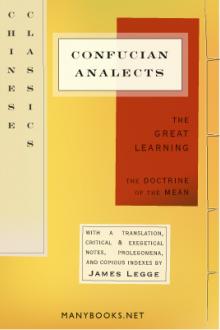Myths and Legends of China, E. Werner [best english novels for beginners TXT] 📗

- Author: E. Werner
Book online «Myths and Legends of China, E. Werner [best english novels for beginners TXT] 📗». Author E. Werner
The Ministry of Exorcism
The Ministry of Exorcism is a Taoist invention and is composed of seven chief ministers, whose duty is to expel evil spirits from dwellings and generally to counteract the annoyances of infernal demons. The two gods usually referred to in the popular legends are P’an Kuan and Chung K’uei. The first is really the Guardian of the Living and the Dead in the Otherworld, Fêng-tu P’an Kuan (Fêng-tu or Fêng-tu Ch’êng being the region beyond the tomb). He was originally a scholar named Ts’ui Chio, who became Magistrate of Tz’ŭ Chou, and later Minister of Ceremonies. After his death he was appointed to the spiritual post above mentioned. His best-known achievement is his prolongation of the life of the Emperor T’ai Tsung of the T’ang dynasty by twenty years by changing i, ‘one,’ into san, ‘three,’ in the life-register kept by the gods. The term P’an Kuan is, however, more generally used as the designation of an officer or civil or military attendant upon a god than of any special individual, and the original P’an Kuan, ‘the Decider of Life in Hades,’ has been gradually supplanted in popular favour by Chung K’uei, ‘the Protector against Evil Spirits.’
P’an Kuan
Page 249
The Exorcism of ‘Emptiness and Devastation’
The Emperor Ming Huang of the T’ang dynasty, also known as T’ang Hsüan Tsung, in the reign-period K’ai Yüan (A.D. 712–742), after an expedition to Mount Li in Shensi, was attacked by fever. During a nightmare he saw a small demon fantastically dressed in red trousers, with a shoe on one foot but none on the other, and a shoe hanging from his girdle. Having broken through a bamboo gate, he took possession of an embroidered box and a jade flute, and then began to make a tour of the palace, sporting and gambolling. The Emperor grew angry and questioned him. “Your humble servant,” replied the little demon, “is named Hsü Hao, ‘Emptiness and Devastation,’” “I have never heard of such a person,” said the Emperor. The demon rejoined, “Hsü means to desire Emptiness, because in Emptiness one can fly just as one wishes; Hao, ‘Devastation,’ changes people’s joy to sadness. “The Emperor, irritated by this flippancy, was about to call his guard, when suddenly a great devil appeared, wearing a tattered head-covering and a blue robe, a horn clasp on his belt, and official boots on his feet. He went up to the sprite, tore out one of his eyes, crushed it up, and ate it. The Emperor asked the newcomer who he was. “Your humble servant,” he replied, “is Chung K’uei, Physician of Tung-nan Shan in Shensi. In the reign-period Wu Tê (A.D. 618–627) of the Emperor Kao Tsu of the T’ang dynasty I was ignominiously rejected and unjustly defrauded of a first class in the public examinations. Overwhelmed with shame, I committed suicide on the steps of the imperial palace. The Emperor ordered me to be buried in a green robe [reserved for members of the imperial clan], and out of gratitude for Page 250that favour I swore to protect the sovereign in any part of the Empire against the evil machinations of the demon Hsü Hao.” At these words the Emperor awoke and found that the fever had left him. His Majesty called for Wu Tao-tzŭ (one of the most celebrated Chinese artists) to paint the portrait of the person he had seen in his dream. The work was so well done that the Emperor recognized it as the actual demon he had seen in his sleep, and rewarded the artist with a hundred taels of gold. The portrait is said to have been still in the imperial palace during the Sung dynasty.
Another version of the legend says that Chung K’uefs essay was recognized by the examiners as equal to the work of the best authors of antiquity, but that the Emperor rejected him on account of his extremely ugly features, whereupon he committed suicide in his presence, was honoured by the Emperor and accorded a funeral as if he had been the successful first candidate, and canonized with the title of Great Spiritual Chaser of Demons for the Whole Empire. Page 251
Chapter X
The Goddess of Mercy
The Guardian Angel of Buddhism
As Mary is the guiding spirit of Rome, so is Kuan Yin of the Buddhist faith.
According to a beautiful Chinese legend, Kuan Yin. when about to enter Heaven, heard a cry of anguish rising from the earth beneath her, and, moved by pity, paused as her feet touched the glorious threshold. Hence her name ‘Kuan (Shih) Yin’ (one who notices or hears the cry, or prayer, of the world).
Kuan Yin was at one time always represented as a man; but in the T’ang dynasty and Five Dynasties we find him represented as a woman, and he has been generally, though not invariably, so represented since that time.
In old Buddhism Shâkyamuni was the chief god, and in many temples he still nominally occupies the seat of honour, but he is completely eclipsed by the God or Goddess of Mercy.
“The men love her, the children adore





Comments (0)